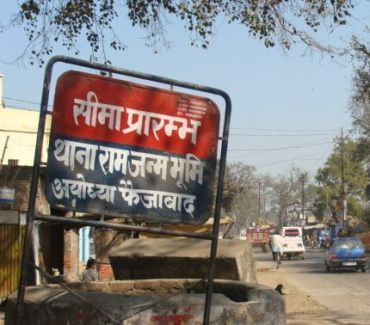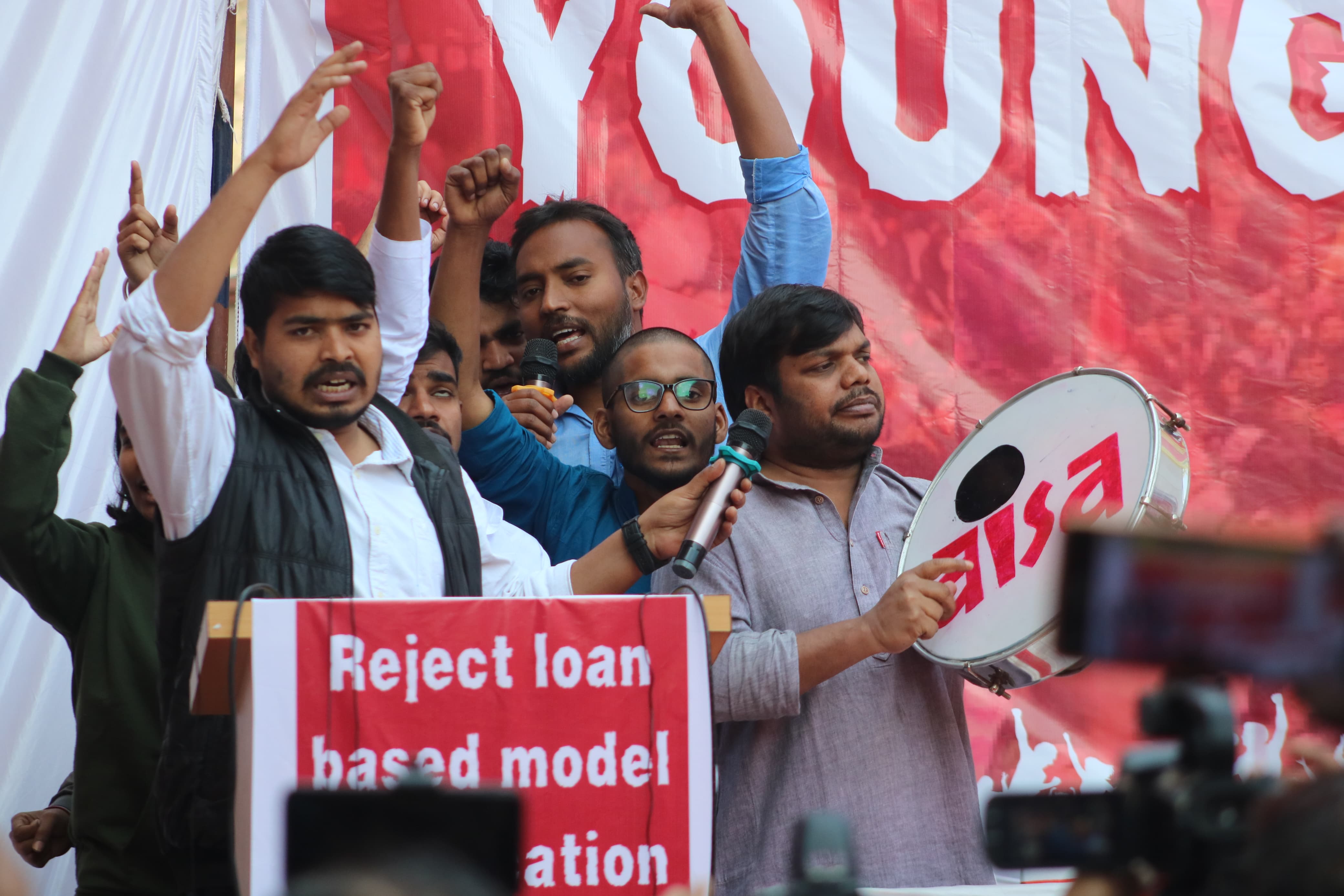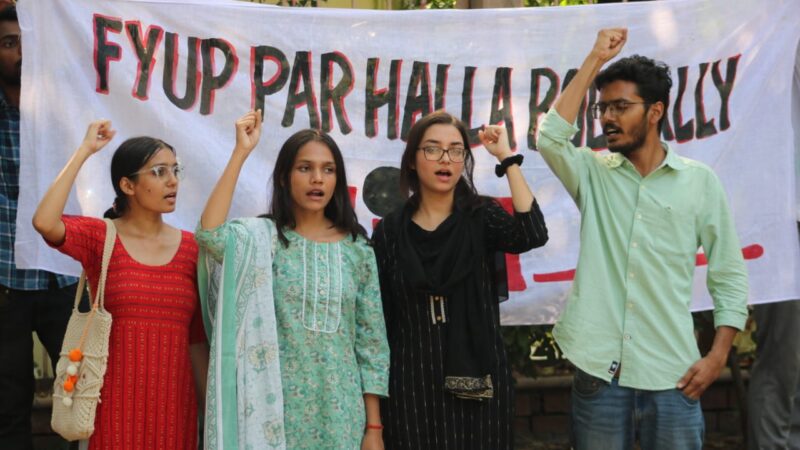Ayodhya Verdict: When ‘Faith’ Becomes Law …..and when Facts, Evidence, Logic and Justice are Sacrificed…..
 60 years after the matter was first referred to the court, the Allahabad High Court has finally delivered the much-awaited verdict on the Ram Janambhoomi-Babri Masjid issue. In what has been correctly referred to by constitutional experts as ‘panchayati justice’ dictated by political compulsions rather than by facts or legal considerations, the court entirely dismissed the petition of the Sunni Waqf Board which has owned the land for close to five centuries. Instead, the court shockingly held that as per the ‘beliefs’ of Hindus, the property under question is indeed the birth place of ‘Ram Lalla Virajman’. Further, according to the HC, a Ram temple previously existed at the disputed site, which was demolished to construct the Babri Masjid – and therefore, the Hindus can claim rights over the property. After having thus dismissed the Muslims’ legal claim over the property, the court has then proceeded to nevertheless allocate one-third of the disputed property to the Sunni Waqf Board.
60 years after the matter was first referred to the court, the Allahabad High Court has finally delivered the much-awaited verdict on the Ram Janambhoomi-Babri Masjid issue. In what has been correctly referred to by constitutional experts as ‘panchayati justice’ dictated by political compulsions rather than by facts or legal considerations, the court entirely dismissed the petition of the Sunni Waqf Board which has owned the land for close to five centuries. Instead, the court shockingly held that as per the ‘beliefs’ of Hindus, the property under question is indeed the birth place of ‘Ram Lalla Virajman’. Further, according to the HC, a Ram temple previously existed at the disputed site, which was demolished to construct the Babri Masjid – and therefore, the Hindus can claim rights over the property. After having thus dismissed the Muslims’ legal claim over the property, the court has then proceeded to nevertheless allocate one-third of the disputed property to the Sunni Waqf Board.
What the court has essentially done is that it has paved the way for more Babri Masjids to happen. One wonders, had the Babri Masjid not been demolished by the Sangh Parivar, would the HC have given the same verdict? Had this verdict been implemented pre-1992, the 500-year old mosque in this ‘secular’ country would have been demolished not by marauding Hindutva mobs, but legally and under the aegis of the esteemed Allahabad HC!
Sangh Parivar’s ‘Faith’ Prevailed Over Facts and Evidence
This bizarre verdict is indeed historic – for probably the first time, a court of law has dealt with what is essentially a dispute over land, property and ownership on the basis of purported ‘faith’. And the Sangh Parivar is already gloating over this legal ‘stamp of approval’ on a matter of ‘faith’.
So, what is the basis of the final judgment? How do the Hindu groups have claim to 2/3rd of the land (1/3rd to the representatives of ‘Ram Lalla Virajman’ and 1/3rd to the Nirmohi Akhada)? The three judges in this case have different opinions. Two of the judges have concluded that a Ram temple indeed existed at the site and was subsequently demolished for constructing the mosque. It is to be noted that there is NO established, conclusive historical and archeological basis for coming to such a sweeping decision. The much touted ASI report (prepared during Vajpayee’s NDA regime) which claims that there was ‘some large Hindu structure’ existing at the site has been questioned by several eminent historians. Moreover, even the spurious ASI report does not pretend that demolition of a temple had indeed taken place, or that Lord Ram was born at the site! The basis of the verdict is thus ‘faith’ and ‘belief’ (of the Sangh Parivar and its advocates), not facts and evidence. A look at the some of the conclusions the judges have come to raise extremely disturbing questions for our secular and democratic polity:
“This court is of the view that place of birth, that is Ram Janmabhumi, is a juristic person. The deity also attained divinity like Agni, Vayu, Kedarnath. Asthan is personified as the spirit of divine worshipped as the birthplace of Ram Lala or Lord Ram as a child.” (Justice Dharam Veer Sharma)
“It is declared that the …. disputed structure being the deity of Bhagwan Ram Janamsthan .. as per the faith and belief of the Hindus, belongs to the plaintiffs [Hindus]” (Justice Sudhir Agarwal)
“The disputed building [Babri Masjid] … was built against the tenets of Islam. Thus, it cannot have the character of a mosque” (Justice Dharam Veer Sharma)
In a secular democratic state, all arms of the state have to respect every citizen’s religious faiths and beliefs. However, the state should not and in fact cannot arbitrate disputes on the basis of the faiths and beliefs of any community – this is precisely the difference between a secular democratic state and a theocratic, fascist state.
Moreover, on what basis can the three judges determine what constitutes ‘Hindu’ beliefs and faiths? Or what is against the ‘basic tenets of Islam’? Can any court accept the Sangh Parivar and its advocates as the authentic representatives of ‘Hindu beliefs’? Is it the job of a court of law to arbitrate on essentially theological issues? The Allahabad HC has thus substantially overstepped its role, with dangerous repercussions.
Dangerous Precedence
India has a complex history: there are records of Hindu temples coming up after the demolition of Buddhist monasteries, of mosques being built after the demolition of temples and vice versa. These are incidents of the past, which happened when India was not a declared secular, democratic republic (unlike the 1992 demolition of the Babri Masjid). Now, in modern India, is the Allahabad HC verdict (which gives credence to purported ‘beliefs’ of some alleged and unproven wrongs committed in the ancient and unrecorded past) the right way of dealing with our history? Such precedence will lead to complete chaos in the country and a complete destruction of our secular polity.
All three judges in the case have admitted that the Ram idols were illegally smuggled into the mosque premises in 1949. They have however chosen NOT to take legal cognizance of this clearly communal and criminal act while delivering the judgment! Similarly, they have chosen not to address the issue of Babri Masjid’s demolition, which was again a clearly criminal and communal act. This verdict has in a sense legalized, justified and strengthened the very ideological basis of ‘belief’ which led to several patently illegal acts such as the installation of Ram idols within the Babri Masjid premises and the demolition of the mosque in 1992.
By allowing ‘faith’ and ‘belief’ to guide a legal verdict in the court of law, the Allahabad HC has set an extremely dangerous precedent. Now, what can stop someone from arguing in court (quoting the Ayodhya verdict as a precedent) that it is the ‘belief’ of Hindus that people of the same gotra are brothers and sisters and therefore should not be allowed to marry? Or that it is the ‘belief’ since times immemorial that widows should commit sati and should be revered for it?
The Future Challenge of Defending Secular Credentials
“Some have suggested the mistaken idea that to remember is dangerous, because by remembering, history will repeat itself as a nightmare. Yet…it is amnesia that makes history repeat itself, repeat itself as nightmare. Amnesia implies impunity, and impunity encourages crime”.
– Uruguayan writer Eduardo Galeano
Some commentators have applauded the HC’s attempts at ‘reconciliation’ – since both the Hindus as well as Muslims have been given some land (it is another matter that the RSS and the BJP have already started throwing hints that the Muslims should give up their land for the construction of a grand Ram Temple in the spirit of harmony and ‘amity’!). The Hindu and the Indian Express have joined P. Chidambaram in lauding the verdict, and Pratap Bhanu Mehta has gone to the extent of laughably arguing that the verdict represents the ‘depoliticisation of religion’! One wonders, why this hesitancy in recognizing the obvious saffronization of the judiciary? It is highly unfortunate that today, ‘secular’ voices like Javed Akhtar and Barkha Dutt, and even the CPI(M)-card-holding N Ram (editor of The Hindu) are telling us to do exactly what Galeano warned us against – resort to amnesia and provide immunity to those who are hell-bent on destroying our democratic and secular fabric.
The fact of the matter is that any real ‘reconciliation’ can only happen on the solid basis of justice and truth. The HC verdict not just operates on faith and denies justice, it also dangerously ratifies the very ideological basis of ‘faith’ which led to the demolition of the Babri Masjid. Thus, shockingly, according to the verdict, Hindu ‘beliefs’ prove that the 500-year old Masjid was an ‘illegal’ structure and that the Muslims had no business praying there! And this is precisely why the HC verdict cannot be termed as genuine ‘reconciliation’.
The Ayodhya case is a true test of our secular and democratic credentials. The system has till now miserably failed this test – whether it is the judiciary or the executive (the surreptitious placing of the idols in the mosque, the opening of locks of the mosque for worship by Hindus and the 1992 demolition for instance). Predictably the matter has now been placed before the Supreme Court. If at all we want to safeguard any notions of being a modern, democratic state, the Supreme Court will have to correct the dangerous precedent set by the Allahabad High Court.






A mythical ‘God’ elevated to the status of a ‘person’ in the court of law!!! That too with a place of birth!
This judgement is yet another indication of the deep roots of communalism in India. Shocking!
other than making ‘Ram’ a valid petitioner in the court of law, the verdict also claims that it knows what all the Hindus believe and what is against Islam, just like the sangh parivar.the verdict is extremely communal. an outcome of a political project.
अगर अदालत में राम किसी वकील के द्वारा represent किये जा सकते हैं तो सीता क्यों नहीं. किसी महिला संगठन को अपने को सीता की सहेली बताते हुए राम के खिलाफ गुजारा भत्ते के लिए मुकदमा दायर करना चाहिए. जितने भी राम मंदिर हैं सबकी आय का आधा हिस्सा सीता को मिलना हीचाहिए.
Well Said….
jo log ayodhya verdict ko apni jeet man rahe hai ………..kya wo log ye jante hai ram kis satabdi aur kis date ko janm liye the………….kya babri masjid ke niche koi niw pai gai thi ki jise ye log bol rahe hai ki ram mandir ko hata kar babari masjid banaya gaya tha……………
Hey fellows when you stop research article like this come up in form of ignorance. When Archeological Findings says a lot about massive structure.
THERE ARE ONLY 2 RELIGIONS
RELIGION OF THE CREATOR
The creator stays above the universe never comes on earth. He sends down his holy book to earth. He is The Creator of all, has no parents, no wife nor children. He is supreme power no need to change shapes nor asks anyone to help, every thing happens at His wish; he can destroy all his creations. None of his creations can compete in any manner. He commands his worship. He punishes those who worship any other Gods or any of his creations.
RELIGION OF THE CREATED
The created he she or it lives on earth. They and their believers write their own holy books. They have parents, wives, and children. They are not supreme power they change shapes ask others help. They fight wars to destroy the evil and their competitors. They don’t bother if their competitors are also worshiped. They cannot protect their worshipers from other Gods rivalry. If there are more than one God will they not fight with each other for supremacy?